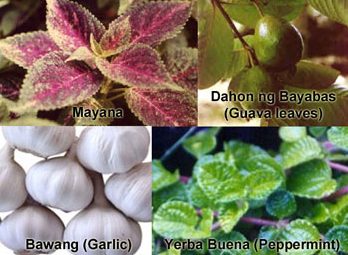Training in the Filipino martial arts (FMA) employs bladed and impact weapons and with it comes the possibility of injuries. The latter was very prevalent in the olden days when dueling was a norm among escrimadores.
This article is about traditional Filipino remedies for such injuries. The methods of treatments discussed in this article are for information purposes only presented within the context of Philippine culture and traditions. Any individual who intends to employ them for actual use should first consult a medical professional.
FMA weapons generally produced three types of injuries namely wounds, bruises and contusions.
The general term for skin and flesh wounds in Filipino is “sugat,” for bruises “pasa” and for contusions “bukol.” The first is caused by contact with a sharp object while the last two results from a hit of a blunt instrument.
There are basically two ways to inflict trauma with a knife, it’s either to slash (creating a cut) or to thrust (creating a puncture wound).
Felipe Landa Jocano, the Philippines’ foremost anthropologist in his award-winning book “Folk Medicine in a Philippine Municipality,” elaborates on the nature of wounds based on his research on traditional Filipino healers, he wrote, “Sugat caused by sharp blades, made either of wood stone or metal, are known as taga or hiwa.
Taga are cuts or incisions inflicted on the skin by big instruments like bolos, knives, or daggers. Hiwa are cuts inflicted by smaller instruments like pen knives, shaving blades or broken glasses. Characteristically, taga are bigger and deeper; the incisions are vertical – that is, crosswise through the skin and the flesh. Hiwa are smaller; the incisions horizontal – that is the cuts follow lengthwise the layer of the skin and the flesh.
Because of these characteristics, the two terms are often interchanged and the inflicting instruments becomes of secondary importance in the process of identifying the wound. Sugat through punctures are known as saksak, deep piercing wounds made with pointed instruments or objects.”

Mayana, bayabas [guava] and bawang [garlic] are three medicinal plants commonly used by traditional Filipino healers to treat wounds. Mayana (scientific name: Coeus blumei Benth), which is cultivated for ornamental purposes is administered to stop minor bleeding of wounds and to heal bruises and sprains.
For treatment, mayana leaves are crushed and applied directly on the wound. In case of bruises, the crushed leaves are secured on the injured part with a bandage and are replaced three times daily.
The young leaves of a bayabas tree (scientific name: Psidium Guajava) are widely used in the Philippines for cleaning and treating wounds. For cleaning wounds, the leaves are boiled in water for a few minutes.
The liquid is allowed to cool down and is applied generously on the wound while still lukewarm. Guava leaves can also be pounded and applied directly on the wound. This medicinal plant is heavily used by Filipinos to hasten the healing of circumcision wounds.
Ubiquitous in Filipino kitchens, bawang (scientific name: Allium sativum), is the most important ingredient of adobo the Philippines’ most popular dish. Several scientific studies in the West have already proven the antiseptic properties of garlic.
To disinfect wounds, garlic cloves are crushed and the juice applied directly on the wound. Stories abound of how soldiers during World War II used garlic to heal wounds and prevent the onset of gangrene.
Written during the late 1960s and early 1970s, Jocano in his book mentioned a type of healer called “tigagamot ng taga,” whose specialty was exclusively the treatment of hack wounds, a part of his book reads, “This specialists are skillful in stopping hemorrhage and profuse bleeding.
One well-known specialist in the lakeshore area was a woman who claimed, when we interviewed her, that her treatment consists mainly of pangungusap (saying prayers). “I do not use medicine,” she said.”
Bukol resulting from hits of a blunt weapon usually involves swelling of tissues and skin discoloration ranging from reddish blue at the center of the puffed area to ash gray around it.
Pain from this injury can be reduced by administering pounded leaves of yerba buena (scientific name: Clinopodium Douglasii), commonly known as peppermint on the affected area. Yerba buena has long been known to possess analgesic properties.
Jocano’s book even contained a liniment formula, which may prove useful in reducing muscle soreness from hard escrima training, it says, “For simple muscular pains only, the following medication is used: one tablespoon of black pepper, two tablespoons of salt, a quantity of garlic, and one cup of coconut oil.
The garlic is pounded, mixed with pepper and salt, and heated on a frying pan. Coconut oil is poured into the mixture as soon as it is hot. The resulting paste is allowed to cool a little and is used, while still warm, to massage the aching body. After this is done, the patient is wrapped in a blanket and instructed to go to sleep.”





















